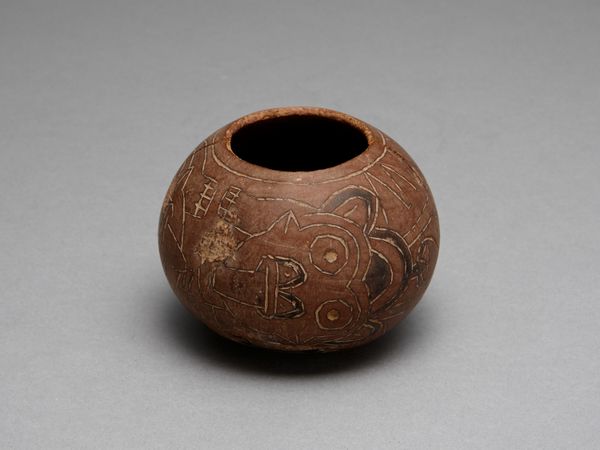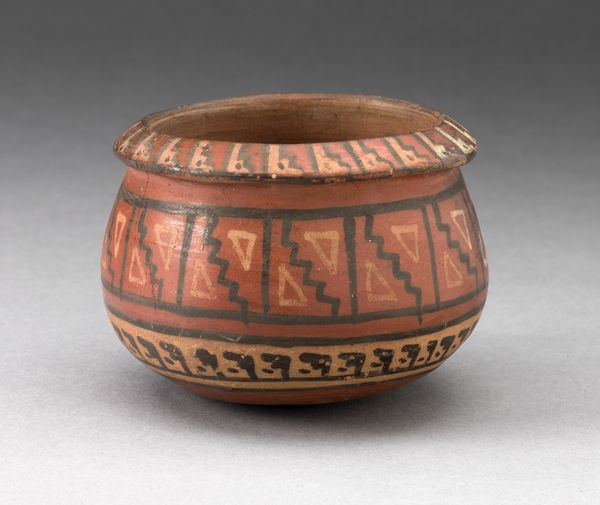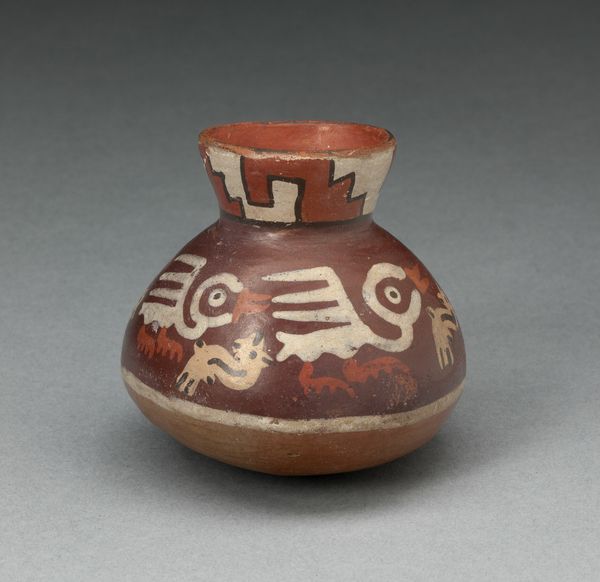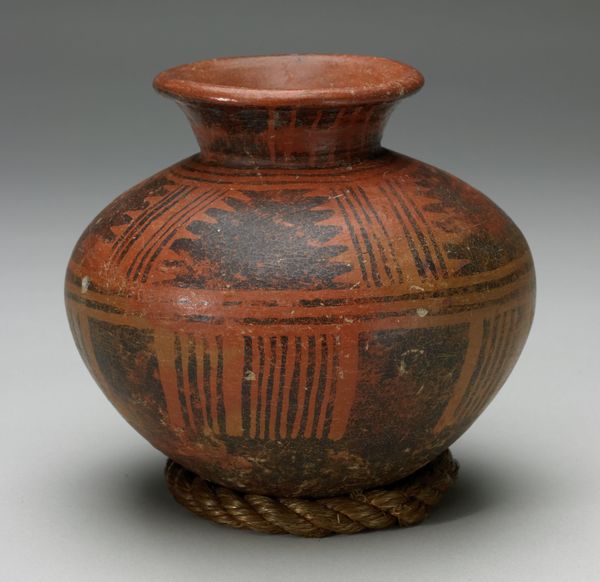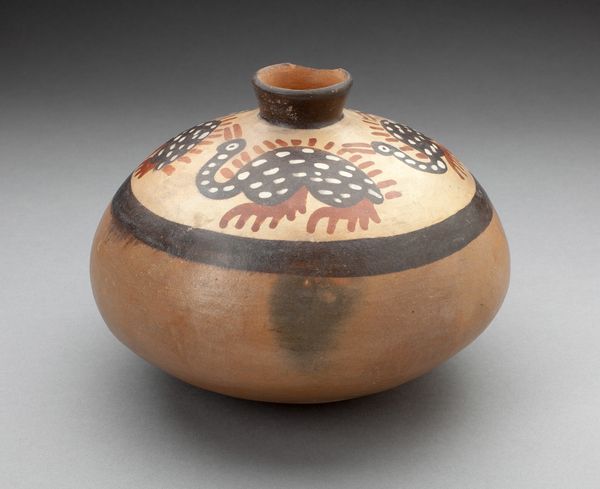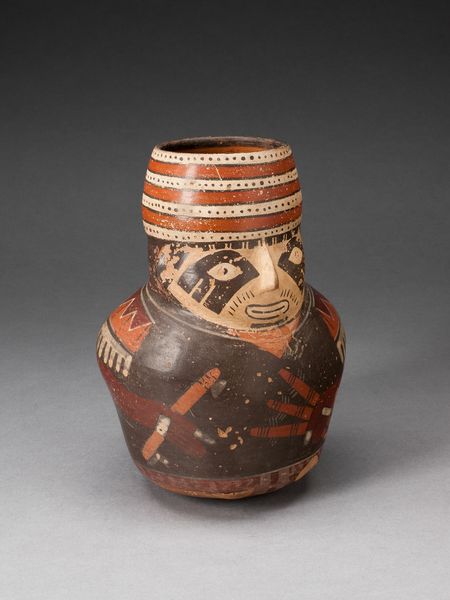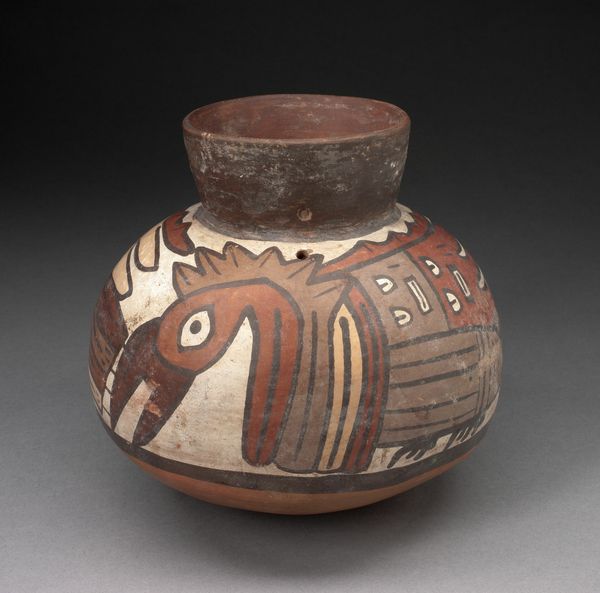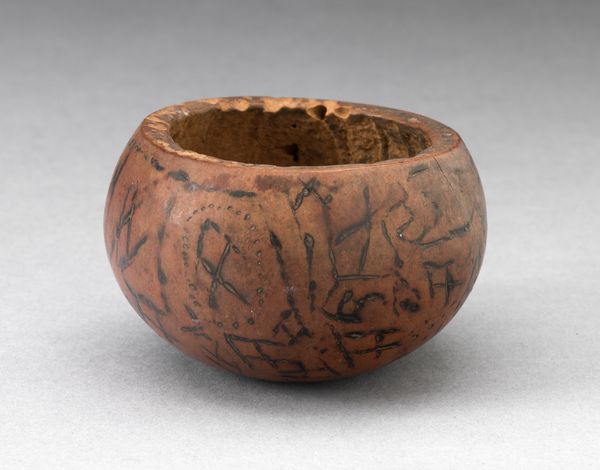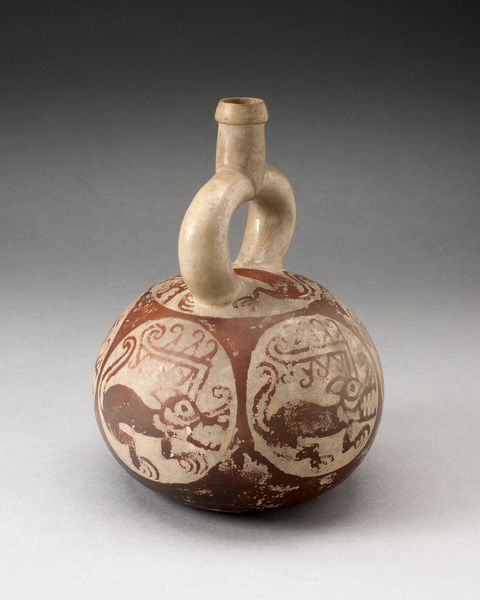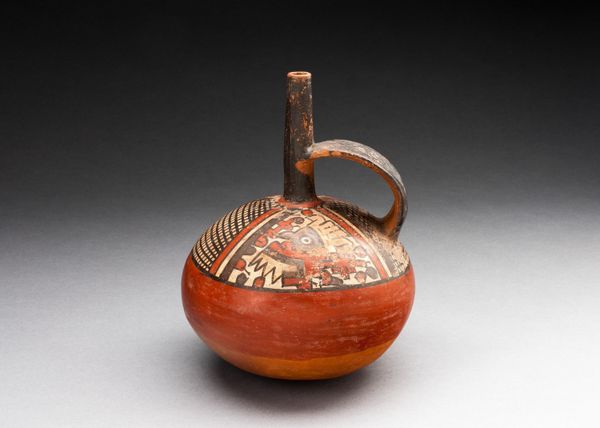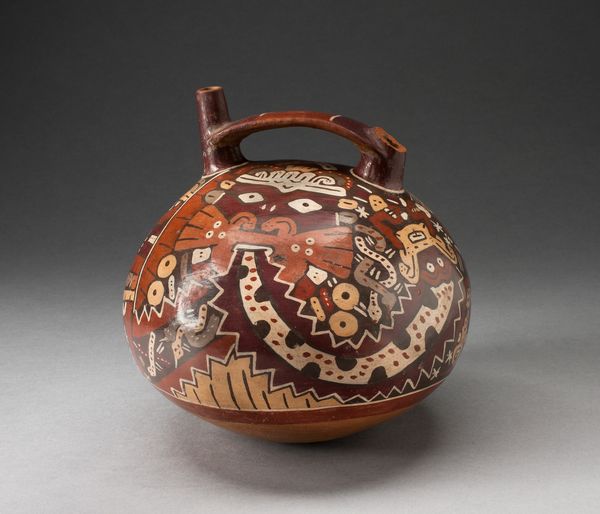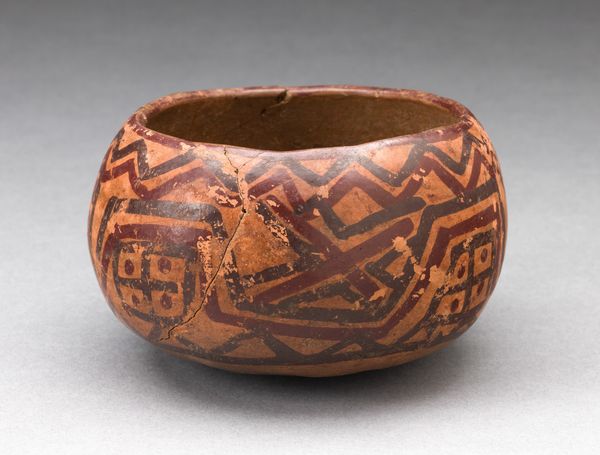
Miniature Jar with a Single Spout Depicting an Abstract Figure c. 180 - 500
0:00
0:00
ceramic
#
ceramic
#
figuration
#
ceramic
#
indigenous-americas
Dimensions: 4.6 × 6 cm (1 13/16 × 2 3/8 in.)
Copyright: Public Domain
Curator: Here we have a Nazca ceramic piece, believed to have been crafted between 180 and 500 CE. It's a miniature jar, featuring a single spout, adorned with an abstract figure. Editor: The vessel makes me feel uneasy; it's quite unsettling with that striking combination of blood-red and deep black hues looming against the faded surface. What a strange and fascinating object! Curator: Consider the context, though: The Nazca people thrived in a challenging desert environment. The bold colours are probably not about inflicting horror but rather conveying life force, rituals, and social identities—an assertion of existence. Editor: Perhaps. My eye is drawn to what seems to be a highly stylized, maybe anthropomorphic, figure on its surface, and the deliberate positioning of that single spout. Can we decode the meanings embedded in the image? Curator: Absolutely, Iconography is fundamental. It seems that many Nazca ceramics feature representations of deities, mythical beings, or scenes from everyday life, all interconnected with social values. Editor: And how would you view it through our modern lens, in a gendered reading of it for example? Curator: Well, considering our current social discourses, it's essential to question the power dynamics at play within the society that created this. Who had the authority to depict these figures, and whose stories were being told or omitted? Who were the carriers of such vessels and who were their users? This helps reveal possible narratives of identity, gender, or marginalization. Editor: This has brought my attention to the overall formal and psychological composition, like the jar itself almost acts as a microcosm, holding symbols central to their beliefs and society. These visual artifacts really do weave cultural continuity throughout time. Curator: Indeed. Studying artifacts such as these requires nuanced appreciation, both for its original historical circumstances and how it resonates, and perhaps even challenges, our understanding of the present. Editor: I think I have now a fresh take and that unnerving sensation I described before has disappeared; now I see instead a call of resilience and of visual record to cross the eons. Thanks.
Comments
No comments
Be the first to comment and join the conversation on the ultimate creative platform.

